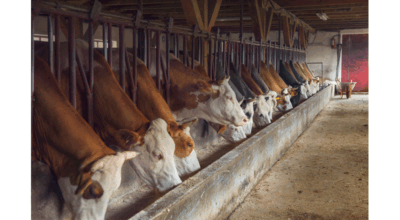Tobacco growers consider implications of FDA nicotine proposal
Published 9:38 am Wednesday, May 9, 2018
Virginia Farm Bureau
KENBRIDGE
As the U.S. Food and Drug Administration takes public comment on a proposed nicotine standard for combustible tobacco products, Virginia tobacco growers are considering the future of their industry.
On March 15, the FDA issued an advance notice of proposed rulemaking on its Tobacco Product Standard for Nicotine Level of Combustible Cigarettes. The agency is taking public comment through June 14 on the standard, which would lower nicotine in cigarettes and other combustible tobacco products to what it considers a minimally addictive or non-addictive level. One scenario in the proposal would set a limit of 0.4 milligrams of nicotine per gram of tobacco — about 97 percent lower than current nicotine levels in typical cigarettes.
That scenario’s implications for tobacco production were discussed at a recent meeting of the Virginia Farm Bureau Federation Flue-Cured Tobacco Advisory Committee.
“Already a lot of the growers are looking at different avenues” to keep their farms viable, noted committee member and Lunenburg County tobacco farmer Richard Hite. He said the proposed scenario “would affect me substantially” and would result in cigarettes that would be “unsmokeable” by consumers due to changes in flavor. “We’re producing a product that naturally contains nicotine.”
Mecklenburg County tobacco grower Jim Jennings, who also serves on the VFBF committee, concurred. “I can’t picture people smoking tobacco without nicotine. I mean, why would they?” he queried. Jennings compared the scenario to telling consumers that alcoholic beverages — another legal, regulated product — all would be made with low or no alcohol content. “Guess what? They’re not going to like it.”
Critics of the proposed FDA standard have asserted that dramatically reduced nicotine levels will compel smokers to smoke more cigarettes, smoke more deeply or lace conventional cigarettes with liquid concentrated nicotine products. They’ve also expressed concerns that the standard would boost black market cigarette traffic.
Nicotine levels in tobacco are determined by plant variety, weather during the growing season and the amount of nitrogen applied to a crop.
Tony Banks, a VFBF commodity marketing specialist, said adoption of the proposed FDA standards would “totally disrupt the flue-cured market, and it would all but eliminate the burley market,” as burley tobacco contains higher levels of nicotine.
He noted that growing lower-nicotine varieties of tobacco might sound like an easy fix, but those plants may require different production and curing practices. “It’s going to take some time to adapt to that type of production,” as well as potential investment in new curing technologies, and there is no assurance the new crop would be sustainable.
Banks added that a genetically modified tobacco variety, as suggested by the FDA, would require extensive review by the FDA, the U.S. Department of Agriculture and the Environmental Protection Agency and could have serious implications for tobacco exports.
Seventy percent of Virginia-grown tobacco is exported. Sales to European Union countries, many of which ban or restrict cultivation of GMO crops, are significant.
Growers raise tobacco under contract with cigarette manufacturers, and their production practices will be dictated by the manufacturers’ needs under any new standards.
Currently, Hite said, “we just don’t know how many growers are going to be willing to go through those extra hoops.”





